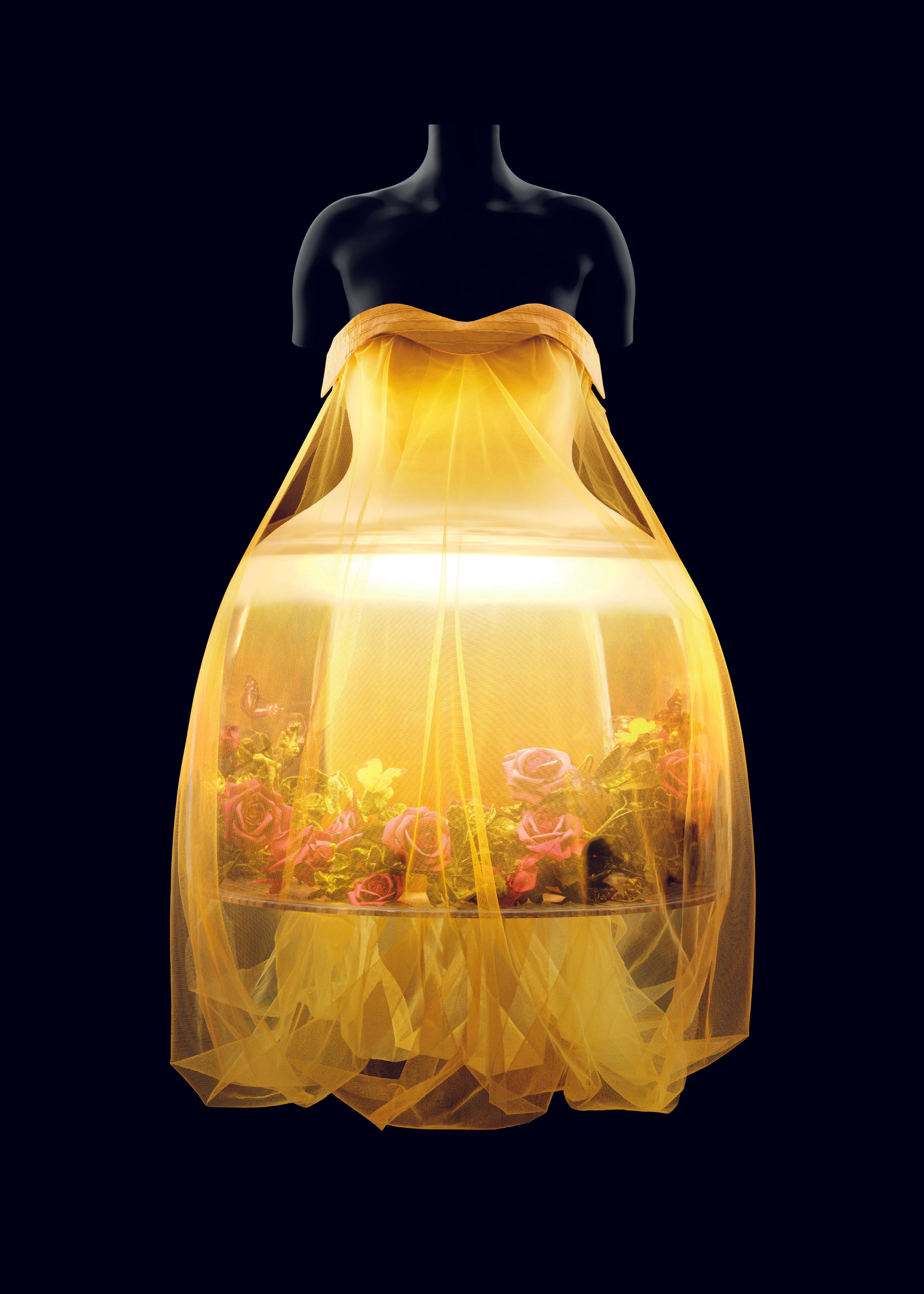Robe à l'anglaise
The polonaise gown first came into fashion in the 1770s. It was a style of gown with a close-fitting bodice and the back of the skirt gathered up into three separate puffed sections to reveal the petticoat below. The method of suspending the fabric varied. Most often the dress had rows of little rings sewn inside the skirt through which a cord ran from hem to waist. Alternatively, ribbon ties would be used, with the ribbons forming decorative bows. However, in some instances the skirt was held in place by simple cords sewn to the inner waist of the dress and looped over buttons attached to the outside waistline. The stays underpinning the bodice of the polonaise were not markedly different from those which supported the robe à la française.
Russian, German, and French Rococo styles absorbed chinoiserie into a seamless whole of frivoles, fêtes galantes, and colorful narratives. One particular syncretism is evident in painted wallpapers and dress, where the traditional Western floral forms in Rococo taste cross-pollinated with meandering Chinese patterns.
Artwork Details
- Title:Robe à l'anglaise
- Date:ca. 1780
- Culture:French
- Medium:silk
- Credit Line:Purchase, Mr. and Mrs. Alan S. Davis Gift, 1976
- Object Number:1976.146a, b
- Curatorial Department: The Costume Institute
More Artwork
Research Resources
The Met provides unparalleled resources for research and welcomes an international community of students and scholars. The Met's Open Access API is where creators and researchers can connect to the The Met collection. Open Access data and public domain images are available for unrestricted commercial and noncommercial use without permission or fee.
To request images under copyright and other restrictions, please use this Image Request form.
Feedback
We continue to research and examine historical and cultural context for objects in The Met collection. If you have comments or questions about this object record, please contact us using the form below. The Museum looks forward to receiving your comments.
